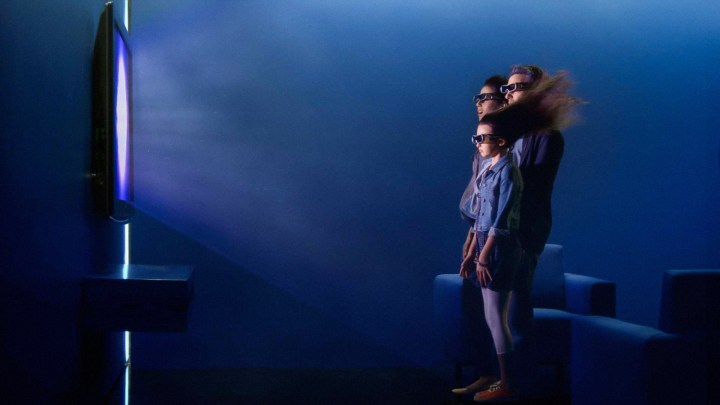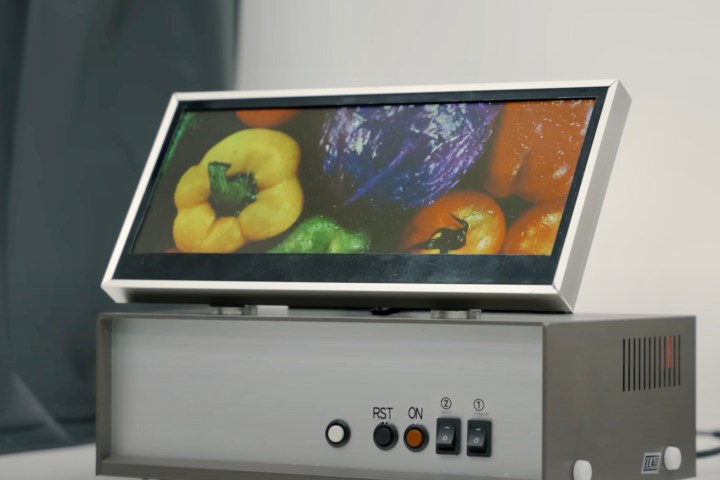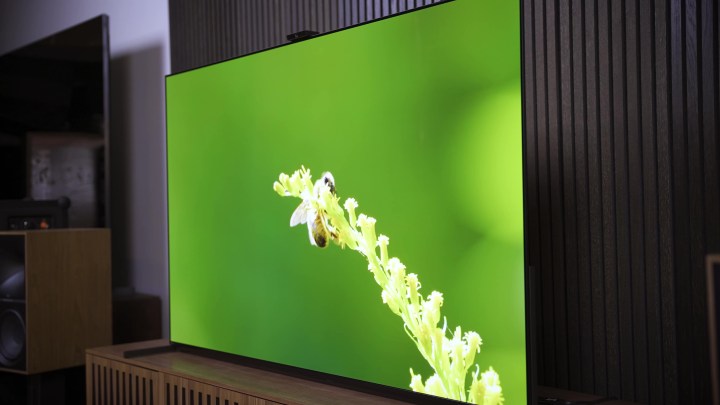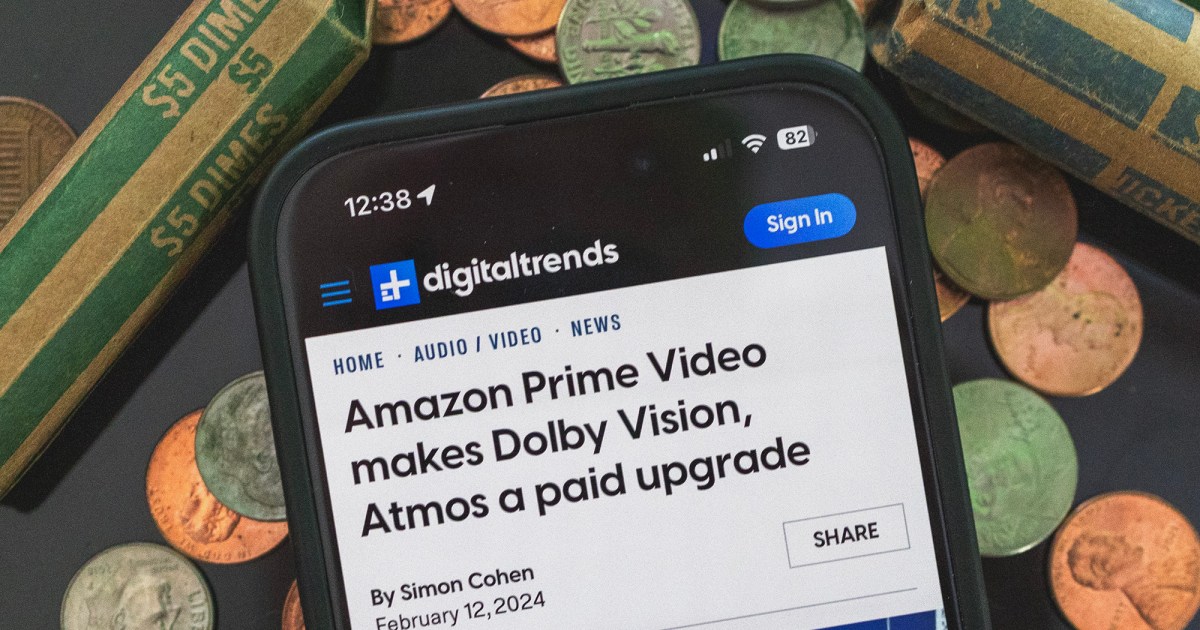
On this installment of You Requested: Is 3D TV making a comeback? Larger mini-LED vs. smaller OLED, Sony A80L vs. LG C3, and is there a method to make the Sony A95L even brighter?
Will VR revive 3D TV?

Scott Tindale writes: Now that each Disney and Apple will likely be including 3D films onto their platform to be used with VR headsets — and in Disney’s case, they’re planning to re-encode these to 4K — are we going to see a revival and an development in 3D expertise again in future TV units?
Scott, I think about you and a number of people would love for me to be improper about this, however I’m going to should say no, I don’t assume so. I do assume that VR headsets are the answer to all our woes with 3D TVs. I do know I’ve mentioned this earlier than, and I’ll say it once more now: passive and energetic 3D glasses have been the pits. Generally, the 3D impact regarded cool, however so many tradeoffs have been concerned. Darkened photographs, decision reduce in half, of us would lose or break their 3D glasses, they usually have been stupidly costly to switch. 3D TV didn’t fail as a result of producers have been lazy — it failed as a result of most individuals didn’t prefer it.
I’m trying on with curiosity at whether or not 3D VR for the Apple Imaginative and prescient Professional or different headsets catches on. And it could be attention-grabbing to see if it makes a youthful era hungry for extra. However I don’t assume the 3D implementation for VR would seamlessly port over to TV. All that is to say that I believe 3D TV isn’t an prompt aspect profit to 3D VR, even with Apple and Disney concerned. However possibly it should revive curiosity, and 3D TV will come again years down the highway. Frankly, although, I’m personally extra all for glasses-free 3D shows. These are getting actually spectacular.
Fairly large and actually nice vs. actually large and fairly nice

Houston writes: I’m attempting to resolve between a QM8 85-inch and a S89C 77-inch. We’re shifting and will likely be changing an LG C7 55-inch. The viewing distance will likely be 12 to 13 toes. I really like the distinction of my OLED, however I actually remorse not getting a bigger measurement. I’m involved that I’ll miss having OLED if I get the QM8, and I fear that the S89C will likely be too small. Do you might have a suggestion for attempting to resolve between a bigger mini-LED TV vs. a smaller OLED?
I really like the premise of an even bigger mini-LED versus a smaller OLED conundrum. I used to be initially attempting to consider the Closing Reply. , one reply to rule all of them, however then I remembered there isn’t any such factor when shopping for a TV is such a private deal. And your query is an ideal instance of that.
You’re at the moment rocking a 55-inch OLED. The scale enhance from a 55-inch to a 77-inch is substantial. In the event you have been to get that 77-inch TV in your new residence, I believe your response could be like, “Dang, that’s a pleasant TV. I want I’d stepped up in measurement a very long time in the past.”
Suppose you set an 85-inch TV in your area. I believe your preliminary response could be extra alongside the traces of, “Holy cow, this factor is large!” And you might marvel in the event you’ve gone overboard. I don’t know — possibly not. Possibly you’ve checked out each sizes and are fairly comfy with how they’ll look in your house. I nonetheless discover that almost all of us are stunned as soon as the TV is definitely within the residence.
Whilst you could also be shocked by the scale of the 85-inch at first, you will get used to it in a short time. A minimum of, nobody I do know has ever regretted shopping for an enormous TV a lot that they returned it. I personally have regarded up on the wall and remarked, “Effectively, that’s simply preposterous,” however I imply, we additionally beloved it.
I’m not serving to you in any respect right here, am I? I believe 77 is fairly good, particularly at a 12- to 13-foot viewing distance. I don’t assume you’ll spend a ton of time regretting not getting an 85-inch as a result of you will have a lot extra superb image high quality. That Samsung S89C will likely be a notable improve in image high quality to start with, and also you’ll have much more of it.
I believe the 85-inch TCL QM8 is an superior TV, particularly for people who’ve by no means had OLED. I can’t guess how connected to the OLED look you might be proper now. Since I can’t crawl into your head, I don’t understand how this determination will affect you psychologically. However I’ll say that you just’re principally deciding between a extremely large slate of fairly nice image high quality versus an enormous slate of implausible image high quality.
When funds is a priority, the choice will at all times come right down to how a lot you worth measurement versus image high quality.
Is QDEL the way forward for show tech?

Nicolas from France writes: Since I noticed your video in regards to the QDEL show made by Sharp, I regarded it up on the web to see this expertise, and I believe it may very well be the way forward for shows. Do you assume QDEL/NanoLED show is the longer term for TVs (and every thing else)? May it change mini-LED, OLED, and the loopy costly MicroLED (which I assumed was the longer term and couldn’t look forward to it)?
So, I believe QDEL (Quantum Dot Electroluminescent) is one potential future for TVs. I don’t assume that TV — or show expertise usually — must or ever will likely be distilled right down to only one sort of expertise. And that’s as a result of there isn’t any such factor as an ideal show, and I don’t see one coming quickly. Each show expertise sort has some deficiency or tradeoff. Proper?
I do assume self-emitting pixels are the longer term, although, and I believe stepping away from natural supplies is the longer term as effectively. So, if I needed to make a prediction, I’d say micro-LED and QDEL will take over the ultra-premium show area. We’ll have micro-LED for all the parents who love searingly shiny TVs and are much less involved about colour accuracy and colour purity, after which we’ll have QDEL shows for people who worth colour accuracy and colour purity over a show that may illuminate your total residence. A show for purists, and a show for fanatics who aren’t purists. After which some older show tech that may nonetheless be superior, however price an entire lot much less as a result of these new shows are taking over the entire premium tier.
That’s what I believe the way forward for TVs appears like for now. We’ll see the way it shapes up, which is half the enjoyable.
Sony A80L vs. LG C3

Tyler James writes: I’m extraordinarily torn between the Sony A80L and the LG C3. I do know the A80L is the dimmest of the massive three, however I can’t shake the sensation that it’s too dim for my liking, particularly after it in-store for hours, though I don’t understand how the shop calibrated it. The C3 appears brighter and it looks as if I’m extra right into a brighter picture, however I’m anxious that the upscaling will make streaming films and stay sports activities not look pretty much as good. Has LG actually made that a lot progress of their upscaling, or would upscaling utilizing an Nvidia Protect Professional 2019 deliver it shut sufficient to the A80L that the superior brightness would put it on high?
I’m going to name an audible right here and say get the LG C3. Its processing is superb, and its upscaling, particularly, is kind of spectacular. I do know we like to gush over Sony’s processing and upscaling as a result of it’s fairly magical, however it’s a skinny margin that separates the A80L and C3 when it comes to upscaling, and it sounds such as you actually need the brightness punch of the C3, so get it.
And don’t hassle including a Protect Professional until you need it for causes aside from upscaling. The LG C3’s processor is superior to what’s within the Protect Professional.
Getting brightness plus colour accuracy

William writes: I lately purchased a Sony A95L and have been utilizing Skilled Mode. Sure, it’s extra correct in colours however noticeably dim in comparison with different modes. In the event you go to a brighter image setting, the image will get extra pop, and that 3D impact that makes you’re feeling like persons are on the opposite aspect of the TV, on the expense of colour accuracy. By placing it in skilled mode, you get probably the most correct image, however you lose a number of that 3D pop. Are you able to please clarify why we are able to’t have a shiny image setting that can be color-accurate?
You can have that 3D pop with probably the most correct colours, whether or not it’s on the Sony A95L or every other premium TV. The skilled mode on the Sony, the Filmmaker mode on one other TV, and even the Cinema Mode on one other is simply a place to begin. They’re going to dim the TV down as in the event you’re watching in a pitch-black room as a result of they’re all attempting to duplicate the creator’s intent, and the creator was in a pitch-black room when the content material was mastered and color-graded.
The answer is to place the TV in skilled mode, then go into the image settings and make some changes. Juice up the backlight or brightness. As an alternative of “gradation most well-liked” on the Sony, attempt setting the height brightness choice to excessive. You’re not going to wreck the D65 white level of the colours a lot while you do that. You’re simply rising the backlight depth and the way in which the processor handles what will likely be shiny and what won’t.
Now, if a few of the “pop” you’re referring to is tied to the whites having extra blue in them, as is the case in the usual mode, vivid mode, and so on. Effectively, there’s no getting across the subject that the heavy blue within the whites contributes to much less correct colours. However I don’t assume that’s your subject. I think that you’re selecting Skilled mode and simply stopping there. It’s essential dig in additional and alter brightness, backlight depth, and HDR settings that may get you the brightness and pop you need. And it’s essential to do that for each SDR and HDR. So, watch some SDR content material, get it the place you prefer it, then watch some HDR content material and make some changes. And from then on, try to be good to go.
Editors’ Suggestions
Supply Hyperlink : https://ungu.uk/


